2021-05-14
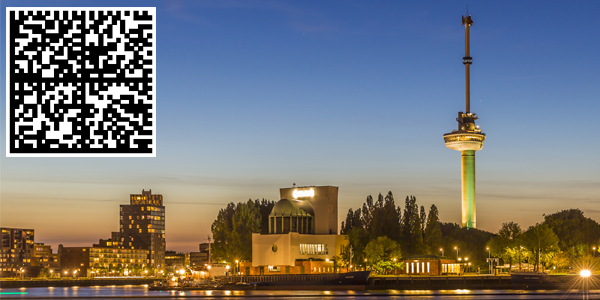
Our jolly travelling party of 8 Official FLAGSTACK Volunteers are going on their final virtual trip through the Kingdom of the Netherlands and take you on their virtual discovery tour! There are a total of 10 highlights to discover in May, read on to find out what the volunteers are experiencing...
In the travel report about Kinderdijk there was a mini hint about today's destination: Rotterdam! To be more precise, today the volunteers will visit the Euromast...
The Euromast is a lookout built on the occasion of the Floriade 1960 (construction period was from 1958 to 1960). It was designed by the Dutch architect Huig Maaskant with a height of 101 meters and its walls are 30 centimeters thick. An enormous 5,800 tons of concrete were used here.
In 1970, the Euromast was extended to its current total height of 185 meters by adding a mast (the so-called "Space Tower"). A rotating gondola winds up this mast, which is glazed all around ("Euroscoop"). The Euromast was the highest building in the Netherlands for a long time (but has now been significantly overtaken by the Gerbrandy Tower at 361 meters).
At the former top, i.e. at a height of about 100 meters, there is a steel construction - the so-called "Crow's Nest". There is a panorama restaurant there and, since 2004, two additional hotel suites for overnight stays are available at this height.
The volunteers are still pondering a bit whether they should try some of the spectacular actions: How about abseiling down the tower or gliding down from a height of 100 meters at a speed of up to 100 km/h?! Well, who dares what??? A little more harmless but much more strenuous is the quarterly stair run over 589 steps up to the crow's nest...
The way to the top is worthwhile in any case, because you have a beautiful view of the city and the Rotterdam harbor, with a clear view even to the North Sea coast which is still about 30 km away and even to the Belgian city of Antwerp at a distance of 80 km... And of course there is also an elevator that brings visitors comfortably to the top ;-)
Rotterdam is an exciting city... Until the next stop, the volunteers enjoy this city with many faces: a cool port city, trendy nightlife city, chic shopping city and hip artist city.
Capture the flag
Your Team FLAGSTACK
PS:
Have you scanned the Friend Flag Code yet???

(Code Valid until 16.05.2021 - 22:00, Timezone FHQ / Europe / Berlin)
2021-05-12
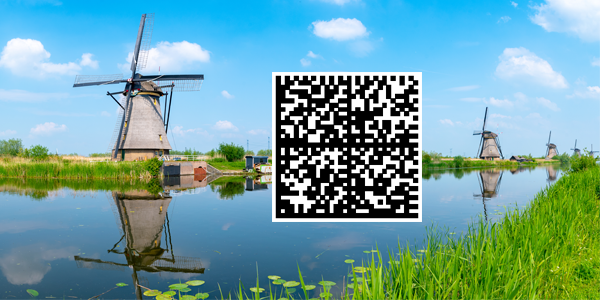
Our jolly travelling party of 8 Official FLAGSTACK Volunteers are going on their final virtual trip through the Kingdom of the Netherlands and take you on their virtual discovery tour! There are a total of 10 highlights to discover in May, read on to find out what the volunteers are experiencing...
After the Delta Works and the quite modern flood protection systems, today a small town southeast of Rotterdam is on the agenda: Welcome to Kinderdijk!
In the beautiful, water-rich area surrounding Dordrecht, the volunteers will find the windmills of Kinderdijk. 19 enchanting windmills, built around 1740, stand here as part of an extensive water management system to prevent flooding. Today, they are the symbol of water management in Holland and in 1997 UNESCO listed them as World Heritage Sites.
The windmills of Kinderdijk were built to keep the lower lying areas of the Alblasserwaard dry. As an ensemble they form a typical Dutch picture. In addition, the numerous watercourses, dikes, windmills and sluices can also be marveled at here and discover how the Dutch have known how to use water to their advantage for over 1000 years already.
If you visit Kinderdijk not just virtually but in real life, be sure to take a look at the three museum windmills and watch the multiscreen film 'Hulpgemaal De Fabriek'. Explore the area from the water by taking one of the boats along the windmills. The mill workshop will then explain you the operation and also the maintenance of the mills.
There is even a waterbus that connects Dordrecht and the center of Rotterdam with Kinderdijk. And if you are sporty, you can do a round trip on your bike enjoying the view of the beautiful mills and landscapes.
The windmills that can be seen along the way tell the story of these green polder landscapes. For centuries, these mills have kept these areas dry and also fulfilled an important economic function: among other things, they served as sawmills and produced wood for the Dutch shipyards and milled grain for bread and malt wine (for jenever). On this route you can also get to know the variety of different types of mills: round mills, polygonal mills, tilting mills ... Most of them can be visited - some by appointment.
The second Saturday in May is National Mill Day in Holland. The millers do their best to decorate their mills as beautiful as possible with flags and flowers. A miller is available for a guided tour and explains in detail the type of mill you are visiting. You might be asked to help the miller turn the blades. Often fun activities are organized for children, introducing them to the miller's trade in a fun way.
This was a nice traditional stop here in Kinderdijk.... Look forward to the next travel report, we will stay in the vicinity...
Capture the flag
Your Team FLAGSTACK
PS:
Have you scanned the Friend Flag Code yet???
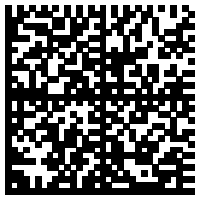
(Code Valid until 14.05.2021 - 22:00, Timezone FHQ / Europe / Berlin)
2021-05-10
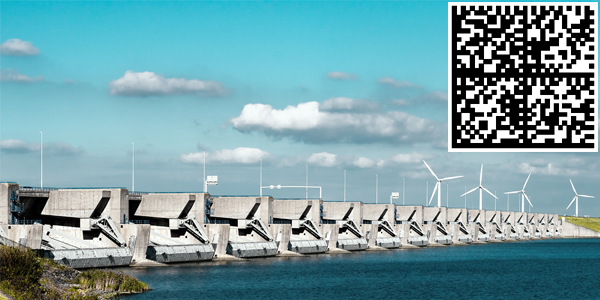
Our jolly travelling party of 8 Official FLAGSTACK Volunteers are going on their final virtual trip through the Kingdom of the Netherlands and are just as excited as you are to see what sights Sim1 and Borghuis have picked out. There are a total of 10 highlights to discover in May, read on to find out what the volunteers are experiencing...
It starts quite “modestly” with the Deltaworks, which consist of a total of 13 structures.
The Delta Works are a protection system against floods and storm surges in the Netherlands, with a focus on the province of Zeeland. They protect the southern part of Zuid-Holland province, the western part of Noord-Brabant province and Zeeland province. The individual structures of the Delta Works are geographically separated from each other along several stretches of coastline. This protection system is urgently needed because approximately half of the country is less than one meter above sea level, and a quarter of the country is below sea level.
The reason for this giant project was the flood disaster of 1953, which unfortunately killed 1,835 people and over 200,000 animals in the river delta in the south of the Netherlands when about 150,000 hectares were flooded. It was the largest Dutch storm surge disaster since the Elizabeth Flood of 1421. Awareness grew that immediate action was needed and no more time was to be wasted.
Before this disaster, the required height of the sea dikes was 4.30 meters above Amsterdam level (NAP); under the Delta project, it was clearly set at 7.65 meters above NAP. "This will bring the dikes up to delta level," hence the project name.
To protect the Netherlands against such storm surges in the future, the government established the Delta Commission on 21 February 1953 (about 20 days after the flood disaster), which drafted the Delta Plan by 18 October 1955. The law drafted on this basis ("Deltawet") was passed on 8 May 1958.
The coastline (shore edge to the North Sea) of the Netherlands has changed drastically due to the Delta Works. Measured from the Veerse Gatdam near Vrouwenpolder (Zeeland province) and the Haringvlietdam near Hellevoetsluis (Zuid-Holland province), the coastline - including the islands of Noord-Beveland, Schouwen-Duiveland and Goeree-Overflakkee - was about 355 km. After completion of the Delta works, it is now only about 60 km.
Novel techniques were used for the construction of the delta works. The Oosterschelde and Maeslant storm surge barriers in particular attracted a great deal of international attention. The Delta Works were declared one of the modern wonders of the world by the American Society of Civil Engineers. Even strong water pressure (up to 180 MN) cannot harm the Delta Works, due to their stable and massive construction.
In addition to shortening the coastline, there is the further advantage that the freshwater supply for the landau was secured. Likewise, the construction of the dams was helpful for mobility. Large parts of Zeeland were relatively isolated until the middle of the twentieth century. Also, the implementation of the Delta Works was conducive to shipping traffic. In 1976, the Netherlands and Belgium had concluded an agreement to improve shipping traffic between the ports of Antwerp and Rotterdam. During the construction of the dams, locks and canals on the eastern side of the Delta area, special attention was paid to the conditions of shipping.
The Delta Works consist of the following structures:
Barrage Dutch IJssel (1958); Sand Creek Dam (1960); Veerse Gat Dam (1961); Greveling Dam (1965); Volkerak Dam (1969); Haringvliet Dam (1971); Brouwers Dam (1971); Marquesas Quay (1983); Oosterschelde-Barrage (1986); Oyster Dam (1987); Philips Dam (1987) with rammer locks; Bather Siel (1987); Maeslant barrage (1997); Hartel barrage (1997).
Unfortunately, the volunteers don't have time to visit all parts of the Delta Works and choose probably the most impressive of them all: the Oosterschelde Barrage. You can continue exploring a little more and have a look at all of them...
This highlight really makes you want more to see or sea :-) We'll continue soon, stay tuned and have a good time...
Capture the flag
Your Team FLAGSTACK
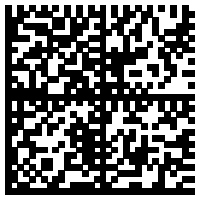
PS: Have you scanned the Friend Flag Code yet???
(Code Valid until 12.05.2021 - 22:00, Timezone FHQ / Europe / Berlin)
PPS:
You can get the 5th edition of the Corona Survival Kit with 50% discounts, a 50% voucher for you and your visit to the webshop and the unique badge here:
https://flagstack.help/produkt/the-corona-survival-kit-05-21/?lang=en
You can prepare delicious Snert pea soup with this: NL-Traditional_Dutch_Split_Pea_Soup.pdf (flagstack.help)
You can donate the ingredients for the recipe in the form of special jumper flags here: https://flagstack.help/produkt/virtual-world-trip-recipe-nl/?lang=en#number
2021-05-09
FLAGSTACK shows you in May on a virtual trip around the world: the Netherlands!
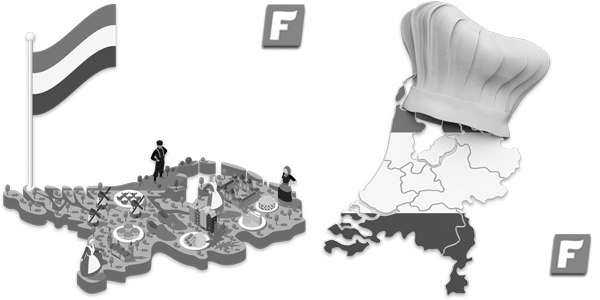
Hello FLAGHUNTER!
Just as the sun is shining over Central Europe today and spreading really good mood, the FLAGSTACK HeadQuarter (FHQ) is spreading terrific news today:
Welkom in Nederland! Welcome to the Netherlands! Join the Official FLAGSTACK Volunteers on the final stop of the virtual world trip through a small but beautiful kingdom...
Sim1 and Borghuis love their home country and show you, the volunteers and the entire FLAGSTACK community a total of 10 cool highlights - from classic to insider tip, you will find everything here. Be curious about the travel reports that will arrive in your inbox in May!
At the beginning of the month, we're sharing an insider tip: the traditional Dutch recipe for you to try! Sim1 and Borghuis recommend you.... "Snert!"
What exactly is snert? Yep, we also had to read on to understand we have a new recipe for a super tasty pea soup.
Yammi! Read it and get the ingredients right away - you won't have to wait long to cook it yourself :-)
NL-Traditional_Dutch_Split_Pea_Soup.pdf (flagstack.help)
Ingredients? Oh yes, there was something more... You've probably already noticed the first ones on the map. Amazingly, there are a few crazy people in the community who have already treated peas, Rookworst and water to the community. From 10.05.2021 you will find the other necessary ingredients on the FLAGSTACK map! Gather enough water, carrots, peas, potatoes, onions, pork belly bacon and rookworst to make your delicious soup!
Although the sausage and bacon are not vegetarian/vegan, they are virtual like the other ingredients. So also perfect for nutritional / allergenic / dieting / anything else you can think of conscious FLAGHUNTERs to have real fun in May on the last stop of the virtual world trip.... :-)
Want to sponsor some ingredients? Check out the virtual FLAGSTACK supermarket and choose which tidbits you want to treat the community to as a May Jumper:
The virtual "World Tour - Stopover Netherlands" will start on 10.05.2021. Bit by bit you will receive the news with the sights and the Friend Flags.
There are two great tasks and badges for you in May: one for continuously scanning the sights and one for diligently collecting the ingredients.
End of the competitions for the virtual "World Tour - Stopover Netherlands" is 31.05.2021, 23:59, time zone FHQ/Europe/Berlin.

Of course, also in May there's a Corona Survival Kit in the 5th edition for you, so that you are able to flagstack in your homezone in a very relaxed way. This package is a great deal with a discount of 50% compared to the regular prices in the webshop.
You still need more arguments to take a closer look? Discover the contents, you'll get a badge AND a personal 50% voucher for your personal favorites in the webshop....
Just click here, and you will see that we don't have to explain much at all ;-)
Have a good time in the merry month of May. Enjoy the competition, the sun and every single day!
Have fun
Your Team FLAGSTACK

2021-05-01
Here is a look at the top 10 of the overall ranking for our statistics fans:
|
Rank |
Name |
Towers |
Country |
Fraction |
Members |
Credits |
|
|
1 |
USA Misfits |
501 |
|
|
5 |
238,611 |
|
|
2 |
The Fantastic Five |
429 |
|
|
5 |
215,168 |
|
|
3 |
Tower Power East |
384 |
|
|
5 |
169,965 |
|
|
4 |
Sic Mundus Creatus Est |
290 |
|
|
5 |
129,243 |
|
|
5 |
FlagstackFanatics |
269 |
|
|
5 |
119,876 |
|
|
6 |
Knight Riders |
239 |
|
|
5 |
111,721 |
|
|
7 |
Kent and the Lockdown Flags |
138 |
|
|
5 |
97,776 |
|
|
8 |
Rapunzel 2.0 |
217 |
|
|
5 |
92,106 |
|
|
9 |
Tower Power North |
189 |
|
|
4 |
84,718 |
|
|
10 |
Psychos |
160 |
|
|
5 |
78,577 |
And here's the fraction ranking of Team Battle #65, and we're delighted with the great overall performance from all players:
|
Rank |
Name |
Towers |
Teams |
Credits |
Average |
|
|
1 |
|
The Syndicate of Flag Hunter |
2397 |
24 |
1,136,811 |
47,367 |
|
2 |
|
The Alliance of Flag Keeper |
2121 |
26 |
914,720 |
35,182 |
|
3 |
|
The Cartel of Flag Seeker |
782 |
19 |
411,774 |
21,672 |
All details about the team and fraction rankings can be found with a quick click.
You can find all detailed information about the credit distribution on the official FLAGSTACK help page for Team Battles.
You are enthusiastic about Team Battles, all the excitement and variety and especially about your personal advantages through the great prizes? Than you know what you have to do: Tell all your friends about it and create a new team - or even two - because after a short recovery time the next Team Battle is already in sight - on 05. May 2021 at 0:00 (Timezone Europe / Berlin) the TB #66 starts!
Your Team FLAGSTACK
2021-04-28
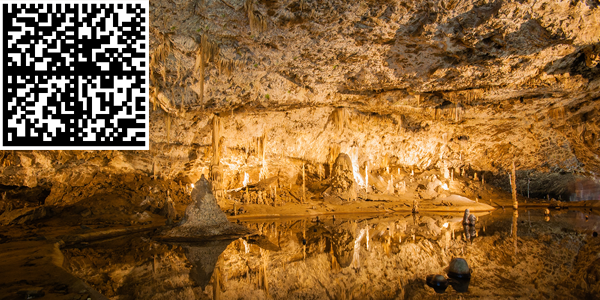
Welcome to the fourth country of the virtual world trip: the Czech Republic! Unbelievable but true - we have already arrived at the last highlight from Lednimedvidek's insider list! Thank you, Lednimedvidek, your tour guiding skills have been convincing all month long and the Official FLAGSTACK Volunteers have sent great reports to the enthusiastic FLAGHUNTERS :-)
After reaching high places at many locations, the virtual trip through the Czech Republic ends with a descent... The volunteers virtually dive into an impressive gorge and an extensive cave system... Welcome to the Macocha and Punkva Cave (Macocha a Punkevní jeskyně)!
Macocha, also called Stepmother Gorge, is a 138.5 m deep collapse doline in the Moravian Karst. The precipice, located in the Vilémovice municipality, has a surface dimension of 174 m × 76 m, making it the deepest gorge in the Czech Republic. Up to the bottom of the debris cone, which is bordered on both sides by two ponds, the quarry has a depth of 187 m. The waters of the underground river Punkva flow through the cone. By the way, the visible watercourse is not the Punkva, but a tributary from the amateur caves, which are the largest cave system in the Czech Republic.
The Macocha can be visited from two platforms at the top. Below, a tour of the Punkva Cave takes you along one of the lakes, which is actually a siphon to an almost 35 km long cave system.
The abyss created by the collapse of a large cave dome is known at least since the 16th century. Nowadays, a part of the caves can be visited with a guided tour. You will not only pass through corridors with breathtaking stalactite decorations and mighty domes, you will even take a ride on motorboats over green deep waters of the underground river Punkva. The trip will be interrupted at one point to visit the Masaryk Dome, which is one of the most beautiful underground spaces in the Moravian Karst.
As huge as the gorge is, the river is a bit different... The small river Punkva is the longest underground river in the Czech Republic, but in total only about 19 km long or short. The catchment area covers 170 km². Only a small part of the river runs on the surface, where it crosses the deep, forested Punkva valley and flows into the Svitava at the edge of Blansko. Further on, the water flows into the Danube and then into the Black Sea.... But the volunteers will not travel that far ;-)
For the best possible variety, from the valley of the Punkva there is the possibility of ascending to the Macocha by means of a small cable car.
Such a versatile highlight includes, of course, a slightly scary legend... According to old folk tradition, it is said that a stepmother lured her little stepson into the forest to hunt for berries in order to get rid of him in favor of her own son. The boy, pushed into the gorge by the stepmother, got caught on a root and was saved. When it became known in the village what had happened, the stepmother jumped into the abyss.
Of course we don't end with such a horror story, but with the prospect of the next destination of the virtual world trip... The volunteers will be invited by Sim1 and Roy to the Netherlands.
Dutch clichés are simple: wooden clogs and delicious cheese... Be excited to see what Simone and Roy will introduce to us beyond these common notions!
Many greetings to the world virtually from the Czech Republic send you the 8 volunteers and the FHQ!
Your Team FLAGSTACK
PS: Have you scanned the Friend Flag Code yet???
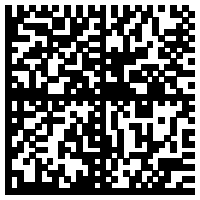
(Code valid until 30.04.2021 - 23:59, time zone FHQ / Europa / Berlin)
2021-04-26
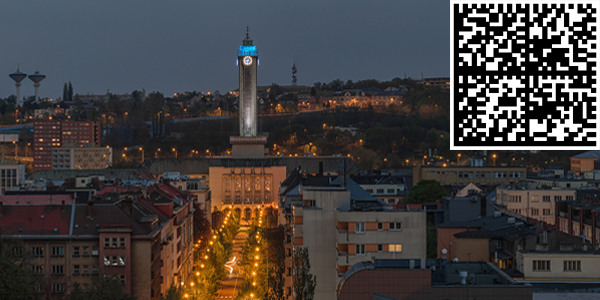
Welcome to the fourth country of the virtual world trip: the Czech Republic! Lednimedvidek demonstrates her tour guide qualities and leads the Official FLAGSTACK Volunteers to a total of 10 highlights on this stopover of the little world tour.
Today, the round trip through the Czech Republic takes the 8 volunteers virtually to Ostrava. The third largest city in the Czech Republic was called the "steel heart of the republic" until just 20 years ago. This refers to the enormous Dolní Vítkovice industrial complex.
The glowing maw of a science fiction city: The Vítkovické železárny ironworks are located in the heart of the city. During the virtual visit to this "city of steel", a fantastic view reminiscent of futuristic science fiction movies from Hollywood is offered to the volunteers: a tangle of iron towers and pipes of the most bizarre shapes that will surely fascinate you. This steel city impresses especially with its clear and rough shapes.
It is the only location in Europe where the entire iron production process was concentrated in a relatively small area, and it has been preserved to this day. In the northern part is the Důl Hlubina deep shaft, which was attached to the site and supplied fuel for the blast furnaces. The blast furnaces, the coking plant and its chemical plant are connected by conveyor belts, a charging system and conveyor bridges. In the central part there is a still operational machine production, in the southern part, in turn, several industrial and administrative buildings can be visited.
The site explains iron production in a vivid way. The volunteers begin their virtual tour at the blast furnace and can follow the path along which the raw materials were once transported. The conveyor elevator takes them all the way into the mouth of the furnace, which was once "fed" with iron ore, coke, calcite and other additives. Fearless visitors can even climb up to the top of the tower, from where they can see the whole of Ostrava. As you descend, you can peer into the spooky interior of the furnace, where temperatures exceeded 1,500 degrees Celsius!
The area is a popular meeting place as well as a cultural center today. The highlight of the year is usually the Colours of Ostrava music festival, which is attended by tens of thousands of people. Part of the Dolní oblast Vítkovice industrial site is also the Science Center Small and Big World of Technology with a variety of interactive scientific exhibits.
The Vítkovice Ironworks (Vítkovické železárny) was founded in 1828 in Vítkovice by the Archbishop of Olomouc and Archduke Rudolf as the most modern heavy industry enterprise in Austria-Hungary at that time. Coal mining and iron production as well as iron refining were discontinued almost 160 years later.
Isn't it nice to read that such old industrial objects are still used, get a new purpose - and thus give a lot of joy and are integrated into the everyday life of many...?!
Your Team FLAGSTACK
PS: Have you scanned the Friend Flag Code yet???
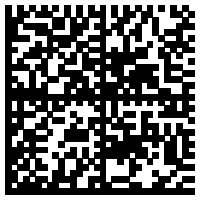
(Code valid until 28.04.2021 - 21:00, time zone FHQ / Europa / Berlin)
2021-04-24
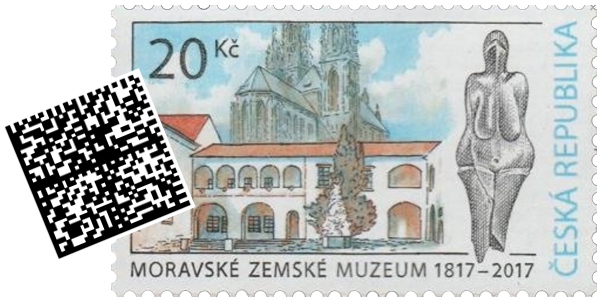
Welcome to the fourth country of the virtual world trip: the Czech Republic! Lednimedvidek demonstrates her tour guide qualities and leads the Official FLAGSTACK Volunteers to a total of 10 highlights on this stopover of the little world tour.
The journey through the Czech Republic today shows a really old relic from the Stone Age to the 8 volunteers: the Venus of Dolní Věstonice. The Venus of Dolní Věstonice is a ceramic Venus figurine. Its age is estimated at 25,000 to 29,000 years and thus assigned to the Gravettian period.
Dolní Věstonice was first excavated in the 1920s - the famous "Venus of Dolní Věstonice" also dates from this period - and later again after the Second World War in 1947-52.
On a grassy slope with a few scattered trees was a small settlement of five huts, partly surrounded by mammoth tusks and other bones. One hut stood 90 meters away from the others. The four huts, which were close together, were supported by wooden posts - similar to tent poles - that sloped slightly toward the center. The hut walls were made of animal skins, which were sewn together, pulled over the wooden posts, and then weighted down on the ground with stones and bones.
Inside the largest hut - about 50 meters long and 20 meters wide - there were five low fireplaces dug into the ground. It is easy to imagine a person sitting on a rock in this relatively comfortable environment, busy making tools. For the work to be done, the person uses a bone as a hammer to hammer thin taps out of a piece of flint. From a distant end of the hut comes a clear, high-pitched sound, similar to the call of a bird. The source may have been a woman blowing into the end of a hollow bone with two or three holes. About 25,000 years later, people will call this instrument the "Flute of Dolni Vestonice".
Inside the separate hut was a fireplace, which was constructed quite differently from those in the other huts. It had an earthen dome above the glowing charcoal layer. This construction represents a kiln used for firing clay - the first kiln ever built. Even at this early stage, the raw material that was fired in the kiln was specially prepared. They didn't just use mud from a riverbank, but mixed it with powdered bones so that the heat was evenly distributed in the kiln and the initial product turned into a new, rock-hard material. This is the first example in the history of human technology of what is now a ubiquitous process - the combination and processing of two or more different materials to obtain a better product than the starting materials alone. It took another 15,000 years for people in what is now Japan to learn to make pots from clay, but the findings from Dolni Vestonice prove that the basics of pottery making had already been invented.
When the remains of the hut with the kiln were first examined in 1951, the sooty floor was littered with fragments of ceramic figurines, mostly animal heads of bears, foxes and lions. But even more fascinating than all the animal figurines and waste on the floor were the finds of human figurines - especially the female ones. Unlike the animal heads, they are not naturalistic, but almost surreal. They have plump breasts and thick buttocks, and their arms and legs are shortened into pointed cones. Perhaps they represented domestic goddesses whose pointed legs were stuck into the ground so they wouldn't fall over while watching over home and hearth. Despite their grotesque proportions, the female figures are aesthetic objects, they radiate something of a grace and dignity, and their stylized plasticity is comparable to sculptures by modern artists.
The famous Venus of Dolni Vestonice is about 11 centimeters high and measures about 4 centimeters at its widest point. It was formed from a lump of clay and fired at a relatively low temperature. The Venus of Dolni Vestonice was discovered on 13 July 1925 in a layer of ashes and had broken apart into two pieces. The figure used to be exhibited in the Moravian National Museum in Brno, but today the original is rarely open to the public. Scientists, however, periodically examine the statuette, for example, by means of a computer tomography in 2004 found the fingerprint of a child or adolescent aged between 7 and 15 years, burned into the surface of the figure.
From the remains of this ancient human community, it is possible to reconstruct a fascinating picture of domestic life in Europe 27,000 years ago. What do you think will still point to our way of life 27,000 years from now? An interesting thought...
Think about it and pick up some flags :-) Capture the flag...
Your Team FLAGSTACK
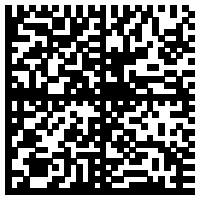
PS: Have you scanned the Friend Flag Code yet???
(Code valid until 26.04.2021 - 22:00, time zone FHQ / Europa / Berlin)
2021-04-22
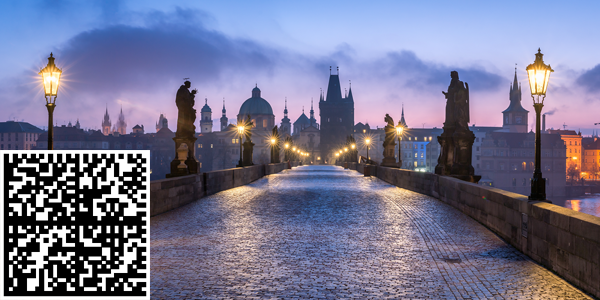
Welcome to the fourth country of the virtual world trip: the Czech Republic! Lednimedvidek demonstrates her tour guide qualities and leads the Official FLAGSTACK Volunteers to a total of 10 highlights on this stopover of the little world tour.
The round trip through the Czech Republic leads the 8 volunteers today to Prague to a real classic, the Charles Bridge (Karlův most).
Charles Bridge (Karlův most) is a historically significant bridge built in the 14th century over the Vltava River in Prague, connecting the Old Town with the Lesser Town. It is the oldest preserved bridge over the Vltava River and one of the oldest stone bridges in Europe. The bridge received its current name only in 1870, it is considered a landmark of the city and belongs to the National Cultural Monuments. The coronation route of the Czech kings led across the bridge.
Initially, a ford served as a crossing over the Vltava, probably since the 9th century supplemented by raft traffic. A wooden bridge was first mentioned in the 10th century by the envoy of the Caliph of Cordoba, Ibrahim ibn Yaqub. The wooden bridge was repeatedly damaged and finally destroyed by a flood in 1157 or 1158. Between 1158 and about 1170 the first Prague stone bridge in Romanesque style, the Judith Bridge was built (Juditin most, named after Judith of Thuringia). In 1342 this bridge was also destroyed by the Magdalen flood. Undestroyed was one of the two bridge towers on the Lesser Town, a gate tower (which was later incorporated into the Maltese Monastery) and some piers and bridge arches, which were integrated into residential buildings on the Lesser Town. By the way, the inspiration for the bridge was the Stone Bridge of Regensburg. Until about 1870 the bridge was still called Prague Bridge. It is said that at that time egg yolk was mixed into the mortar to strengthen the bridge's construction. Unlike its predecessor, the Charles Bridge has survived many floods, most recently in August 2002 when the country experienced the worst flood in 500 years - so the egg yolk seems to have been a good idea.
The laying of the foundation stone of Charles Bridge took place in 1357 by Emperor Charles IV on an optimal date calculated by astrologers: on 9 July, the ninth day of the seventh month at 5:31 a.m., so that the date can be represented by a regular sequence of odd numbers: 1-3-5-7-9-7-5-3-1.
When the Charles Bridge was inaugurated, it did not have any decorations. Only gradually sculptures of saints and patrons were placed on top of the bridge piers, starting in 1629 and mainly in the early 18th century. These were created by various sculptor's workshops and are mainly in the Baroque style. Since 1965, the stone figures have been gradually replaced by replicas; the originals go to the Lapidarium of the National Museum.
The towers on both sides of the bridge, which were completed at different times, are impressive.
On the Old Town side, the Old Town Bridge Tower was built between 1370 and 1380 exactly above the first bridge pier in the Gothic style, and its eastern facade has been preserved over the centuries. Here, the coats of arms of all the countries that belonged to the Bohemian Kingdom at the time of the bridge's construction, the coat of arms of the Roman emperor, the coat of arms of the Bohemian king and a kingfisher framed by a veil (a symbol of Wenceslas IV) are carved in sandstone. The tower can be visited and walked around on a viewing floor. Often a historically dressed trumpeter entertains tourists from up there.
The lower of the two towers is the slightly modified intact tower of the Judith Bridge. It is built in Romanesque style on a rectangular ground plan. Preserved decorations from this period are remains of sgraffito, windows, gables and the roof. In 1591 it was rebuilt in Renaissance style. In 1464, on the order of King George of Podiebrad, probably on the site of an older Romanesque tower, the higher Lesser Town Bridge Tower was built. The design was based on the Old Town Bridge Tower standing on the eastern bank. The towers were connected in the 15th century with a crenellated archway.
The bridge is bustling with activity during the day: Musicians play songs and numerous vendors sell souvenirs and art. The evening hours offer a breathtaking view of the fully illuminated Prague Castle against a dark evening sky. If you really want to have the bridge "for yourself", come here late at night or very early in the morning.... Or virtually, like our 8 volunteers :-)
Na shledanou at the next sight! Many greetings
Your Team FLAGSTACK
PS: Have you scanned the Friend Flag Code yet???

(Code valid until 24.04.2021 - 24:00, time zone FHQ / Europa / Berlin)
2021-04-20
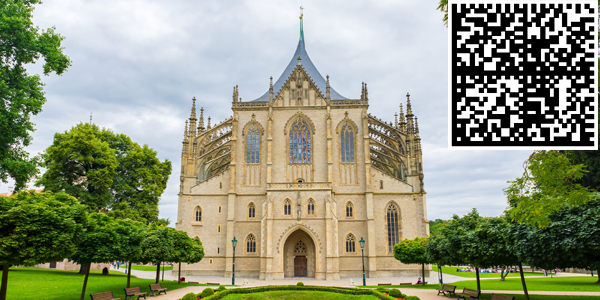
Welcome to the fourth country of the virtual world trip: the Czech Republic! Lednimedvidek demonstrates her tour guide qualities and leads the Official FLAGSTACK Volunteers to a total of 10 highlights on this stopover of the little world tour.
The round trip through the Czech Republic continues and from the State Castle in Telč (Teltsch) today we continue to Kutná Hora (Kuttenberg) to Chrám svaté Barbory, the Cathedral of St. Barbara!
Kutná Hora is one of the most beautiful and historically important Czech towns. Visitors like the 8 volunteers go here mainly to see the main sights - including St. Barbara's Cathedral located right in the heart of the city.
St. Barbara's Cathedral is considered one of the most extraordinary Gothic church buildings in Central Europe. It is on the UNESCO World Heritage List. Its construction was started in 1388, but the building activity was interrupted several times. As a result of the Hussite wars, construction was suspended for more than 60 years until 1482. In 1588, work had to be stopped due to lack of funds. The construction was completed with a temporary intermediate wall. The last phase of construction then followed between 1884 and 1905.
The nave of the church is a five-bay gallery hall. This merges into a chancel with a choir ambulatory, which closes in 15 sides of a 28-corner and externally appears almost rounded. The exterior is dominated by rich buttressing. The unusual layout of the nave is due to a change in the plan under Benedict Ried, who erected pillars above the nave arcades instead of the planned high nave walls of a basilica, thus widening the space. Above the columns rises a unique arched ribbed vault, which blurs the boundaries between individual bays and thus creates a very uniform impression of space. The cathedral did not regain its striking exterior with the three tent roofs until the 19th century. In the course of the neo-Gothic period, the roof, which had been rather plain in the meantime, was replaced by today's construction, which is based on Ried's original plan. In the course of this restoration, the church also received an additional yoke in the west and a new west wall.
The cathedral houses valuable art treasures from various stylistic periods, including an altar by the master of the Trinity Altar, created around 1480, numerous statues and murals, as well as a Gothic choir stall preserved in its original form.
Kutná Hora (Kuttenberg) itself is a town in the region of Central Bohemia with about 20,000 inhabitants. It was founded in the 12th century as a miners' settlement. Towards the end of the 13th century it developed into one of the most lively and prosperous towns in Bohemia. Kutná Hora achieved this through silver mining and the famous minting of Prague Groschen. It was the second largest city in Bohemia after Prague until a large part of Kutná Hora's population was murdered during the Hussite Wars in the 1420s. After that, the town lost much of its importance. Today, the old town of Kutná Hora is a UNESCO World Heritage Site.
Is there still interest in a little history about the name of the town? In 1142, the Cistercian Order founded the Sedletz Monastery, whose lands included the area of today's Kuttenberg. According to the legend, a monk discovered the first silver while working on a vineyard. He marked the spot with his cowl, from which the later name Kuttenberg is said to have originated. More likely is the derivation from the Middle High German word kutta (pit), which refers to mining.
For a virtual day in Kutná Hora, it was quite a lot of information today... There is so much more to see that a trip to Kutná Hora is really worth it for you one day!
Until then, let these short reports lure you virtually into to escape the ordinary...
Your Team FLAGSTACK
PS: Have you scanned the Friend Flag Code yet???

(Code Valid until 22.04.2021 - 22:00, time zone FHQ / Europa / Berlin)